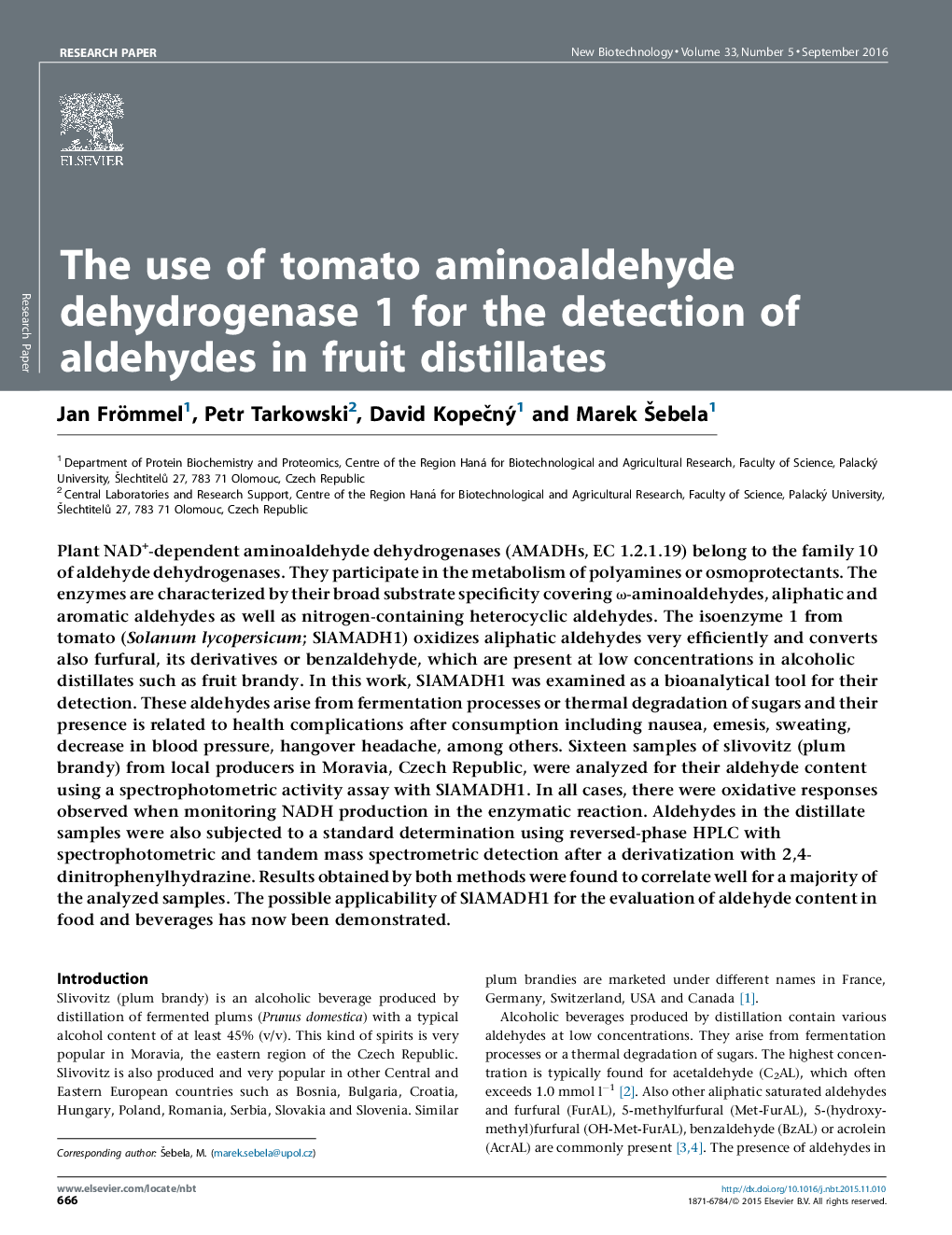| کد مقاله | کد نشریه | سال انتشار | مقاله انگلیسی | نسخه تمام متن |
|---|---|---|---|---|
| 33014 | 44952 | 2016 | 10 صفحه PDF | دانلود رایگان |
• Tomato aminoaldehyde dehydrogenase 1 oxidizes aldehydes from fruit distillates.
• The enzyme was used to evaluate the aldehyde content of plum brandy samples.
• HPLC of aldehyde 2,4-dinitrophenylhydrazones was chosen as a validation method.
• Results obtained by both approaches were found to correlate.
• The tomato enzyme is suitable for a fast assessment of aldehydes in distillates.
Plant NAD+-dependent aminoaldehyde dehydrogenases (AMADHs, EC 1.2.1.19) belong to the family 10 of aldehyde dehydrogenases. They participate in the metabolism of polyamines or osmoprotectants. The enzymes are characterized by their broad substrate specificity covering ω-aminoaldehydes, aliphatic and aromatic aldehydes as well as nitrogen-containing heterocyclic aldehydes. The isoenzyme 1 from tomato (Solanum lycopersicum; SlAMADH1) oxidizes aliphatic aldehydes very efficiently and converts also furfural, its derivatives or benzaldehyde, which are present at low concentrations in alcoholic distillates such as fruit brandy. In this work, SlAMADH1 was examined as a bioanalytical tool for their detection. These aldehydes arise from fermentation processes or thermal degradation of sugars and their presence is related to health complications after consumption including nausea, emesis, sweating, decrease in blood pressure, hangover headache, among others. Sixteen samples of slivovitz (plum brandy) from local producers in Moravia, Czech Republic, were analyzed for their aldehyde content using a spectrophotometric activity assay with SlAMADH1. In all cases, there were oxidative responses observed when monitoring NADH production in the enzymatic reaction. Aldehydes in the distillate samples were also subjected to a standard determination using reversed-phase HPLC with spectrophotometric and tandem mass spectrometric detection after a derivatization with 2,4-dinitrophenylhydrazine. Results obtained by both methods were found to correlate well for a majority of the analyzed samples. The possible applicability of SlAMADH1 for the evaluation of aldehyde content in food and beverages has now been demonstrated.
Journal: New Biotechnology - Volume 33, Issue 5, Part B, 25 September 2016, Pages 666–675
